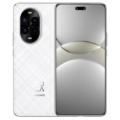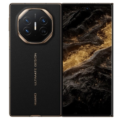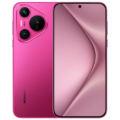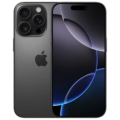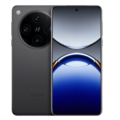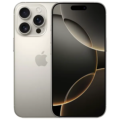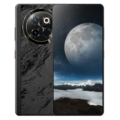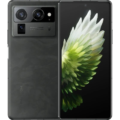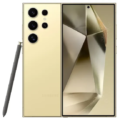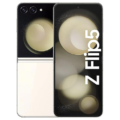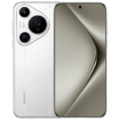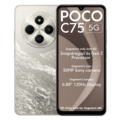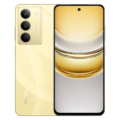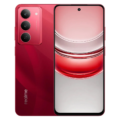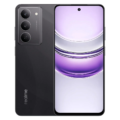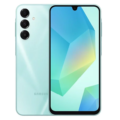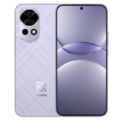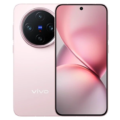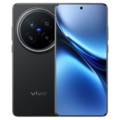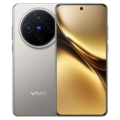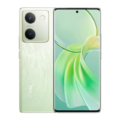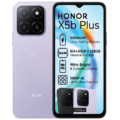Huawei P60 Pro (256GB 8GB RAM Hybrid Dual SIM Green)
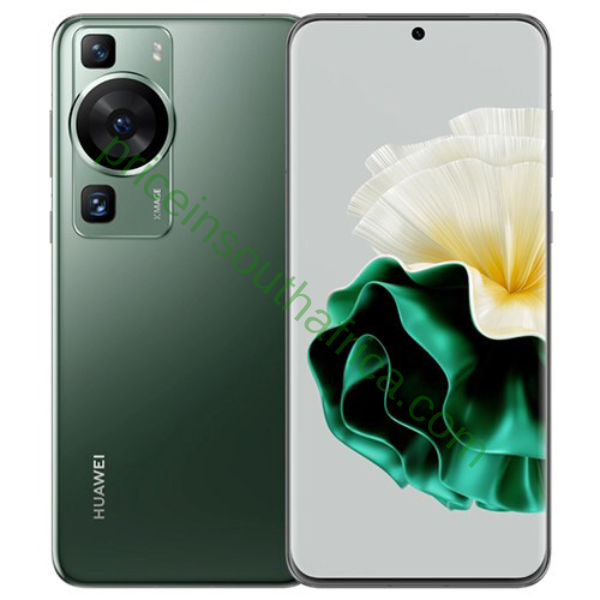





-
CPU: Octa-core (1x3.19 GHz Cortex-X2 & 3x2.75 GHz Cortex-A710 & 4x2.0 GHz Cortex-A510)
-
RAM: 8GB/12GB
-
Storage: 256GB/512GB
-
Display: LTPO OLED, 1B colors, 120Hz
-
Camera: 48MP
-
OS: EMUI 13.1
Huawei P60 Pro Price in South Africa is starting from Rand 20,000. Huawei P60 Pro is EMUI-based high-end smartphones manufactured by Huawei announced in March and released in 2023. The phone comes with with EMUI 13.1 operating system without Google Play Services supported by Qualcomm SM8475 Snapdragon 8+ Gen 1 4G chipset, Octa-core 1×3.19 GHz Cortex-X2 & 3×2.75 GHz Cortex-A710 & 4×2.0 GHz Cortex-A510 CPU speed and Adreno 730 graphic processing unit.
Huawei P60 Pro comes with triple main cameras of 48 megapixels wide camera, 48 megapixels telephoto camera and 13 megapixels ultrawide camera on other hand the phone has selfie camera of 13 megapixels ultrawide camera. The phone is available in option in internal storages of 128GB, 256GB and 512GB with support of 8GB or 12GB of RAM. which make this pho to have the best performance. Huawei P60 Pro has LTPO OLED display type of 6.67 inches with screen resolution of 1220 x 2700 pixels.
Huawei P60 comes with a battery capacity of 4815 mAh which is non-removable with 88W wired fast charging and 50W wireless charging. The phone has fingerprint sensors under display and BDS Satellite Message. Huawei P60 is available in these colors; Black, Green, Violet and Rococo Pearl.
How much is Huawei P60 Pro now in South Africa?
Huawei P60 Pro Price in South Africa is starting from Rand 20,000.
What type of display does Huawei P60 Pro have?
Huawei P60 Pro has LTPO OLED display type of 6.67 inches with screen resolution of 1220 x 2700 pixels.
How much storage and RAM does Huawei P60 Pro have?
Huawei P60 Pro is available in option in internal storages of 128GB, 256GB and 512GB with support of 8GB or 12GB of RAM.
How many megapixels is the camera on the Huawei P60 Pro?
Huawei P60 Pro comes with triple main cameras of 48 megapixels wide camera, 48 megapixels telephoto camera and 13 megapixels ultrawide camera on other hand the phone has selfie camera of 13 megapixels ultrawide camera.
What size battery is in the Huawei P60 Pro?
Huawei P60 comes with a battery capacity of 4815 mAh which is non-removable with 88W wired fast charging and 50W wireless charging.
It's Full Specifications
General
| Brand | Huawei |
| Model | Huawei P60 Pro |
| Announced | 23 March, 2023 |
| Released | 31 March, 2023 |
| Status | Available |
| Price | ZAR 20,000 |
Design
| Type Design Type called form factor refers to a mobile phone's size, shape, and style as well as the layout and position of major components of phone. There are three major form factors seen in mobile phones => bar phones, folding phones and sliding phones. | Bar |
| Dimensions | 161 x 74.5 x 8.3 mm (6.34 x 2.93 x 0.33 in) |
| Weight | 200 g (7.05 oz) |
| Protection | 200 g (7.05 oz) |
| Colors | Black, Green, Violet, Rococo Pearl |
Network
| 2G Network | |
| 3G Network | |
| 4G Network | |
| 5G Network | |
| SIM SIM (Subscriber Identity Module) is a small card that contains mobile network subscriber's account information. This allows the phone using the card to attach to a mobile network. The SIM card is most commonly associated with GSM and UMTS mobile networks. Moving a SIM card from one phone to another allows a subscriber to switch mobile phones without having to contact their mobile network carrier. SIM cards can also be used by a phone to store limited amounts of data, such as phone numbers and text messages. | Single SIM (Nano-SIM) or Hybrid Dual SIM (Nano-SIM, dual stand-by) |
Display
| Display Type Display Technology => A number of display technologies and types used in mobile phones => TFT (Thin Film Transistor), IPS (In-Place Switching), OLED (Organic Light Emitting Diode), AMOLED (Active-Matrix Organic Light-Emitting Diode), Super AMOLED (an even advanced version of AMOLED), Resistive Touchscreen (Resistive touchscreens contain two layer of conductive material with a very small gap between them which acts as a resistance), Capacitive Touchsceen (Capacitive touchscreen technology consists of a layer of glass coated with a transparent conductor) | LTPO OLED, 1B colors, 120Hz |
| Size | 6.67 inches, 107.7 cm2 (~89.8% screen-to-body ratio) |
| Resolution | 1220 x 2700 pixels (~444 ppi density) |
| Display Protection Display Protection => Gorilla Glass is a special alkali-aluminosilicate glass shield with exceptional damage resistance that helps protect mobile displays from scratches, drops, and bumps of everyday use, It is always better to go for a smartphone with Gorilla Glass for that added protection and peace of mind. | Kunlun Glass |
Media
| Audio Playback | |
| Video Playback | |
| FM Radio | No |
| Ring Tones | |
| Loudspeaker |
Camera
| Main Camera Camera is able to capture photographs and usually videos, The most important characteristics of a camera are the resolution (measured in megapixels), lens focus type (fixed or automatic), higher megapixel cameras are known to capture higher quality photos, but not always a good measurement of the photos quality. |
48 MP, f/1.4-f/4.0, 25mm (wide), PDAF, Laser AF, OIS 48 MP, f/2.1, 90mm (telephoto), PDAF, sensor-shift OIS, 3.5x optical zoom 13 MP, f/2.2, 13mm (ultrawide), AF |
| Camera Features | Panorama, HDR |
| Video | 4K@30/60fps, 1080p@30fps |
| Selfie Camera | 13 MP, f/2.4, (ultrawide) |
| Camera Features | Panorama, HDR |
| Video | 4K@30/60fps, 1080p@30fps |
Software
| Operating System OS => Every computer system run on a base software called Operating System (OS). Operating System controls all basic operations of the computer (such as smartphone, PDAs, tablet computers and other handheld devices). The Operating System allows the user to install and run third party applications (apps), apps are used to add new functionality to the device. | EMUI 13.1 |
Hardware
| Chipset Chipset is a group of integrated circuits designed to perform one or a more dedicated functions, often with real time computing constraints, Popular smartphones are equipped with more advanced embedded chipsets that can do many different tasks depending on their programming. | Qualcomm SM8475 Snapdragon 8+ Gen 1 4G (4 nm) |
| CPU CPU (Central Processing Unit) mostly known as processors, CPU processes instructions in order to carry out certain functions that make your device operate properly. Processors are often described as the brain of computers, smartphones and tablets, Smartphones and tablets rely on processors to carry out their every task, Processors are an incredibly important factor in selecting any type of computing device, including your smartphone. | Octa-core (1x3.19 GHz Cortex-X2 & 3x2.75 GHz Cortex-A710 & 4x2.0 GHz Cortex-A510) |
| GPU GPU (Graphics Processing Unit) is a single-chip processor designed to rapidly manipulate and alter memory to accelerate the creation of images in a frame buffer intended for output to a display, This includes things such as lighting effects, object transformations, and 3D motion. | Adreno 730 |
| RAM (Memory) RAM (Random Access Memory) is a type of computer memory that can be accessed randomly, any byte of memory can be accessed without touching the preceding bytes that allows information to be stored and accessed quickly from random locations. RAM is the most common type of memory found in computer systems, smartphones, tablets and other electronic devices. | 8GB/12GB |
| Internal Storage Internal Storage is a data storage space (flash memory) mostly used in smartphones, tablets and other electronic devices where operating system, apps, music, photos, videos, files and other user data Is stored. | 256GB/512GB |
| Card Slot Memory Card Slot is a special slot for inserting a memory card. Memory cards allow you to expand the phone's built-in memory, A memory card (sometimes called a flash memory card or a storage card) is a small storage medium used to store data such as text, pictures, audio, and video, for use on small, portable or remote computing devices such as mobile phones, mp3 players, digital cameras. | NM (Nano Memory), up to 256GB (uses shared SIM slot) |
| Sensors Sensors are electronic components that detects and responds to some type of input from the physical environment. The specific input could be light, heat, motion, moisture, pressure and location, The output is generally a signal that is converted to use in computing systems, a location sensor, such as a GPS receiver is able to detect current location of your electronic device. |
Fingerprint (under display, optical), accelerometer, gyro, proximity, compass, color spectrum BDS Satellite Message |
Connectivity
| Bluetooth Bluetooth is a wireless communications technology for exchanging data between mobile phones, headsets, computers and other network devices over short distances without wires, Bluetooth technology was primarily designed to support simple wireless networking of personal consumer devices. | 5.2, A2DP, LE |
| Wi-fi Wi-Fi is a popular wireless networking technology using radio waves to provide high-speed network connections that allows devices to communicate without cords or cables, Wi-Fi is increasingly becoming the preferred mode of internet connectivity all over the world. | Wi-Fi 802.11 a/b/g/n/ac/6, dual-band, Wi-Fi Direct |
| Wi-fi Hotspot | |
| USB | USB Type-C 3.1, OTG |
| Positioning GPS The Global Positioning System is a satellite-based radio navigation system, GPS permits users to determine their position, velocity and the time 24 hours a day, in all weather, anywhere in the world, In order to locate your position, your device or GPS receiver must have a clear view of the sky. | GPS (L1+L5), GLONASS (B1I+B1c+B2a), BDS (B1I+B1c+B2a), GALILEO (E1+E5a), QZSS (L1+L5), NavIC |
| NFC NFC (Near field communication) is a set of standards for smartphones and similar devices to establish peer-to-peer radio communications with each other by touching them together or bringing them into proximity, usually no more than a few inches. |
Battery
| Battery Type Battery Type => Cell phones run on various kinds of batteries depending on the manufacturer, phone size or shape and features. There are basically four types of cell phone batteries => Lithium Polymer, Lithium Ion, Nickel Metal Hydride and Nickel Cadmium. | Li-Po 4815 mAh, non-removable |
| Charging Wireless Charging (Inductive Charging) uses an electromagnetic field to transfer energy between two objects. This is usually done with a charging station. Energy is sent through an inductive coupling to an electrical device, which can then use that energy to charge batteries or run the device. |
88W wired 50W wireless Reverse wireless |
Disclaimer Note
We can not guarantee that the information on this page is 100% correct.

